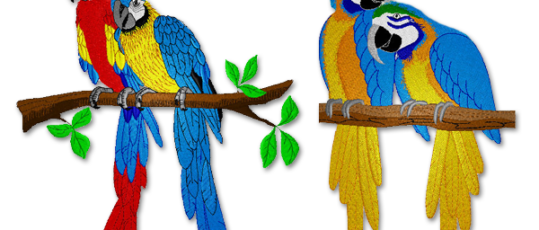Budget Friendly Digitizing for Embroidery: Precision and Detail
Mastering the Needlework Digitizing Process: Your Ultimate Overview
Needlework digitizing is a meticulous craft that requires accuracy and experience to equate complex layouts right into digital layouts for device embroidery. As artisans begin on this journey to master the embroidery digitizing procedure, a comprehensive understanding of the fundamentals establishes the foundation for quality.

Understanding Needlework Digitizing Essentials
Embroidery digitizing essentials create the structure whereupon complex designs are converted right into machine-readable layouts for specific sewing. This preliminary action in the needlework digitizing process is crucial for making sure that the last embroidered product is a loyal depiction of the initial design. Comprehending embroidery digitizing fundamentals involves understanding vital ideas such as stitch types, stitch instructions, density, padding, and pull compensation.
Stitch types play a vital role in figuring out the aesthetic and textural end result of the embroidered design. By picking the ideal stitch kind, whether it be satin, fill, or running stitch, digitizers can achieve the wanted result and boost the total top quality of the embroidery. Additionally, sew direction influences the circulation and dimension of the design, while thickness figures out the spacing and coverage of the stitches.
In addition, underlay stitching gives stability to the layout by safeguarding the material and stopping distortion throughout the embroidery procedure. Pull payment is an additional vital factor to consider to neutralize the natural tendency of material to agreement when sewn. Mastering these needlework digitizing fundamentals is essential for producing professional-quality embroidered items.
Selecting the Right Digitizing Software
Selecting the appropriate digitizing software program is a critical decision that considerably affects the efficiency and quality of the embroidery digitizing procedure. Digitizing for Embroidery. When choosing the best digitizing software application, it is essential to take into consideration elements such as the complexity of styles you prepare to create, the user-friendliness of the software, the degree of customer assistance supplied, and the compatibility with your needlework maker
There are various digitizing software application alternatives offered in the marketplace, varying from fundamental programs for newbies to sophisticated software for expert digitizers. Some preferred selections include Wilcom EmbroideryStudio, Hatch Needlework Software, and PulseID. These software use a wide variety of devices and attributes to help you create detailed styles easily.
Before making a choice, it is recommended to explore the different software application options with complimentary trials or demos to establish which one finest matches your demands. Furthermore, reviewing evaluations and looking for recommendations from experienced digitizers can offer beneficial insights right into the staminas and weak points of each software program plan (Digitizing for Embroidery). By thoroughly evaluating your demands and contrasting the attributes of various digitizing software, you can make an educated option that enhances your embroidery digitizing process
Digitizing Tools and Methods

Optimizing Style Setup for Needlework
Mastering the complexities of layout settings is essential in achieving ideal lead to the embroidery digitizing process, building upon the foundation laid by comprehending digitizing devices and strategies. When maximizing style setups for embroidery, it is necessary to consider aspects such as stitch kind, density, underlay, pull payment, and enrollment. Stitch kind selection impacts the total look and feel of the layout, with choices like satin, fill, and running stitches providing various appearances and effects. Thickness describes the spacing and thickness of stitches, affecting the design's coverage and resilience. Appropriate underlay sewing offers security and stops textile distortion, especially for intricate styles or on stretchy products. Pull payment adjusts for material stretch during sewing, ensuring exact design duplication. Registration setups align different components of the layout precisely, preserving total design integrity. By fine-tuning these style setups, embroiderers can improve the top quality and accuracy of their stitched creations.

Troubleshooting Common Digitizing Issues
When running into usual digitizing concerns throughout the embroidery procedure, it is necessary to recognize the origin triggers and apply effective solutions quickly. One common issue is stitch density problems, where stitches may be as well thick, creating the textile to pucker, or also sparse, resulting in spaces in the design. Changing the stitch density settings in the digitizing software program can help solve this problem.
Another frequent obstacle is string breaks throughout the needlework procedure. This can take place as a result of different reasons such as incorrect tension setups, boring needles, or utilizing low-quality thread. Making sure correct maintenance of the embroidery maker, consisting of routine needle modifications and stress adjustments, can reduce the event of string breaks.
Additionally, layout registration mistakes can lead to misaligned components within the embroidery style. Inspecting the design placement in the digitizing software application and making essential description modifications prior to stitching can aid in avoiding this issue. By addressing these usual digitizing concerns quickly and successfully, you can guarantee a smoother needlework procedure and premium completed items.
Conclusion
To conclude, mastering the needlework digitizing procedure needs a solid understanding of the fundamentals, the ideal choice of software, and understanding of devices and techniques. Maximizing layout settings and fixing typical digitizing issues are essential action in making sure high-grade needlework results. By complying with these actions find this vigilantly, one can accomplish accuracy and performance in the digitizing process.